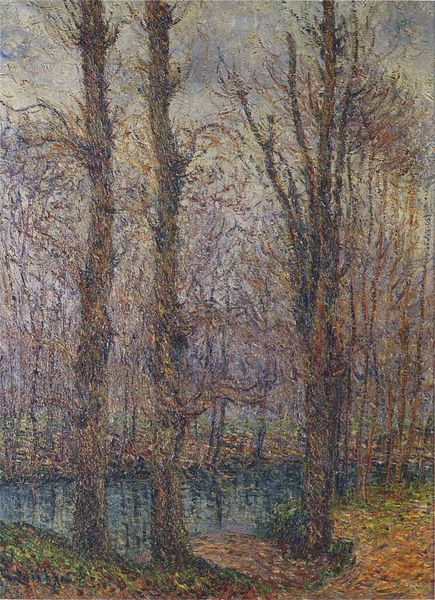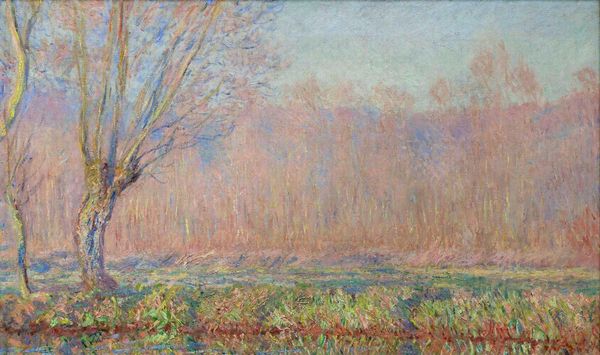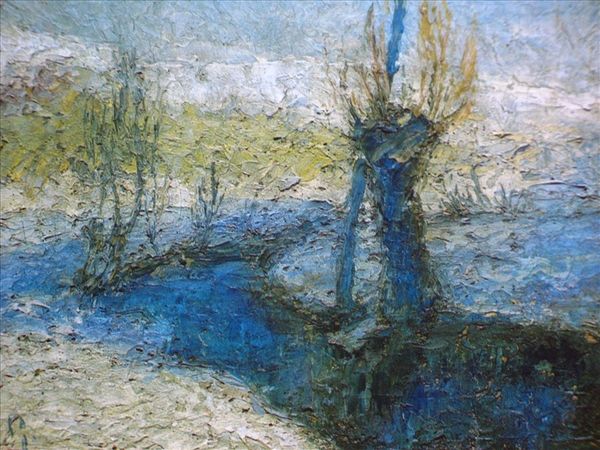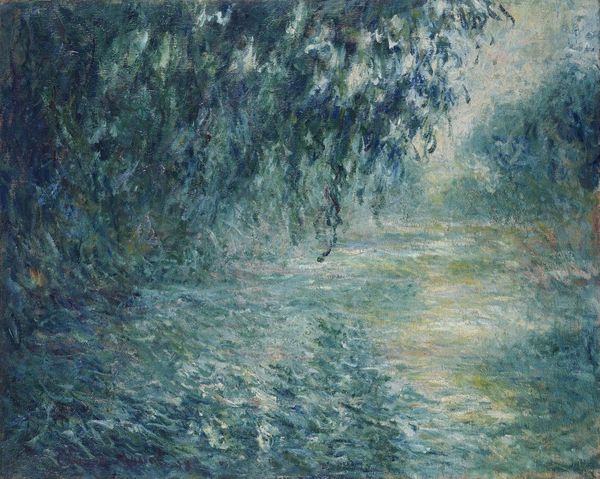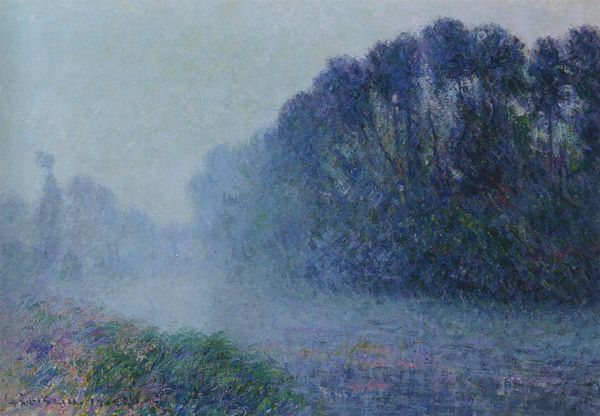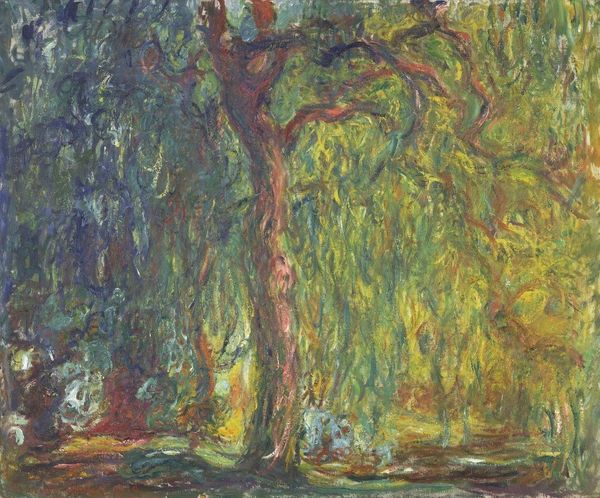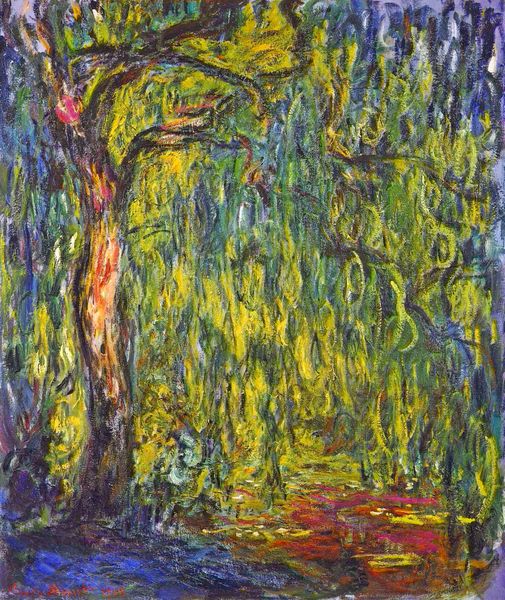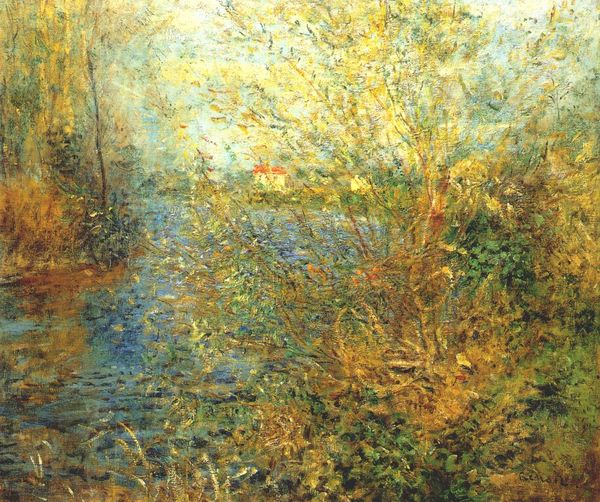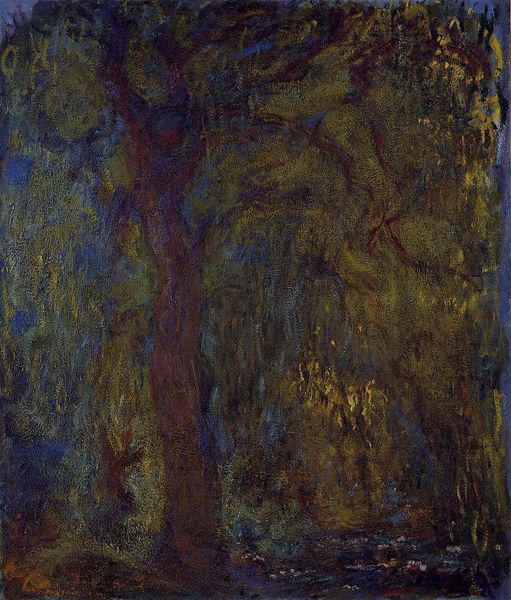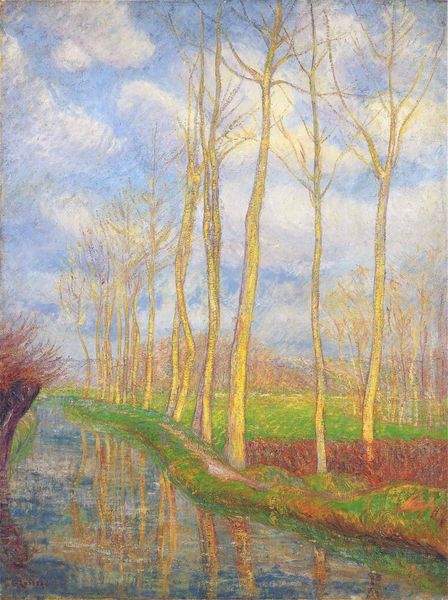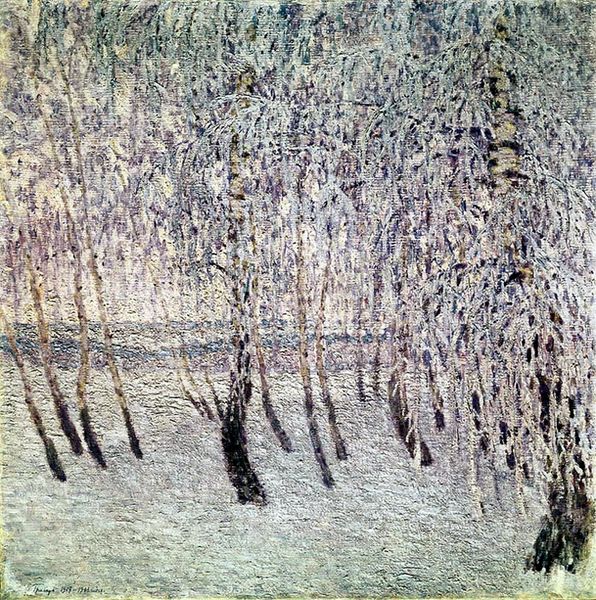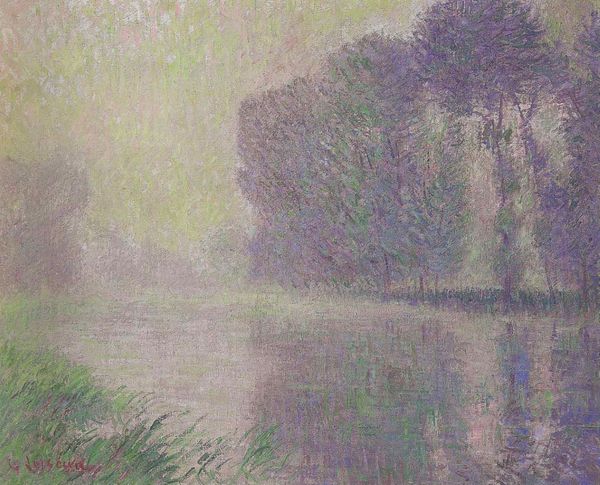
Dimensions: 68 x 68 cm
Copyright: Public domain US
Curator: Standing before us is Frantisek Kupka’s "The Tree," painted around 1906. It's an oil on canvas, showcasing a landscape dominated by a bare tree. Editor: It feels shrouded, doesn't it? There's a haziness to the light, a palpable stillness. I’m immediately struck by its ethereal quality, almost as if the tree is a ghost. Curator: Absolutely. The choice of a solitary tree can be interpreted as a potent symbol, particularly when we consider Kupka's later forays into abstraction and the spiritual currents of his time. Trees are frequently seen as symbols of life, growth, and interconnectedness. Editor: Trees have always been a bridge, connecting the earthly to the celestial. I find it striking how Kupka’s almost Impressionistic style here doesn't dilute that symbolic weight. It almost intensifies it. Curator: Precisely. The blurred forms, combined with the warm light breaking through, creates an atmosphere ripe with the symbolism so common in that era. But it also begs the question, who and what are present within this forest? Given the focus on abstraction, the piece could be regarded as an allegory about the journey into modernity. What is remembered and lost within the context of landscape painting and a society’s self-representation? Editor: I am also intrigued by the bareness of the tree. While often representing the circle of life and continuity, Kupka's subject, stripped bare of foliage, seems vulnerable and enduring. This could touch upon ideas surrounding cultural memory and what symbols are chosen to stand the test of time and hold specific emotional significance. Curator: A powerful observation. I would even argue that this is not solely about cultural memory, but also about the precarity of identity. This bareness encourages viewers to reflect upon their social responsibilities when dealing with marginalized populations and, more significantly, how historical representations contributed to their conditions. Editor: I’m struck now by how, beneath its visual serenity, the piece stirs up complexities regarding what society chooses to symbolize, remember, and carry forward through visual representation. Curator: And by challenging our reading of something as seemingly simple as a landscape, "The Tree" invites viewers to actively participate in interrogating art's societal function. Editor: Indeed. Its lingering symbols offer avenues into much broader explorations of identity and historical representation.
Comments
No comments
Be the first to comment and join the conversation on the ultimate creative platform.
